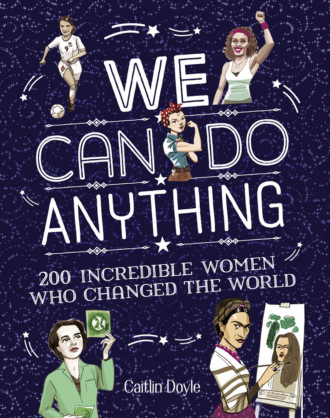We Can Do Anything: From sports to innovation, art to politics, meet over 200 women who got there first

Полная версия
We Can Do Anything: From sports to innovation, art to politics, meet over 200 women who got there first
Язык: Английский
Год издания: 2019
Добавлена:
Настройки чтения
Размер шрифта
Высота строк
Поля
Конец ознакомительного фрагмента
Купить и скачать всю книгу


